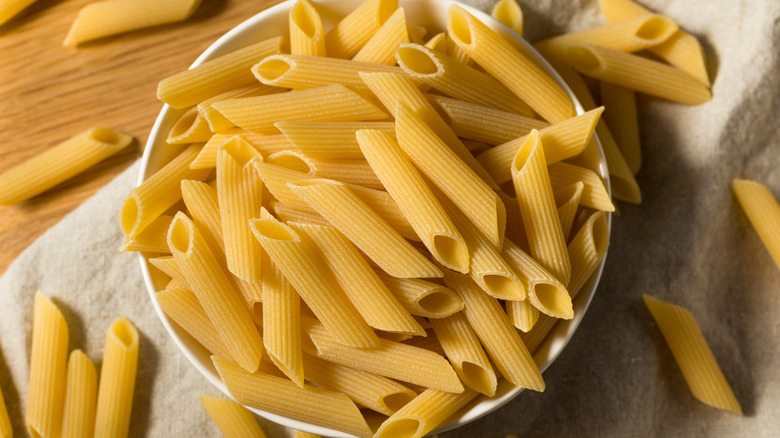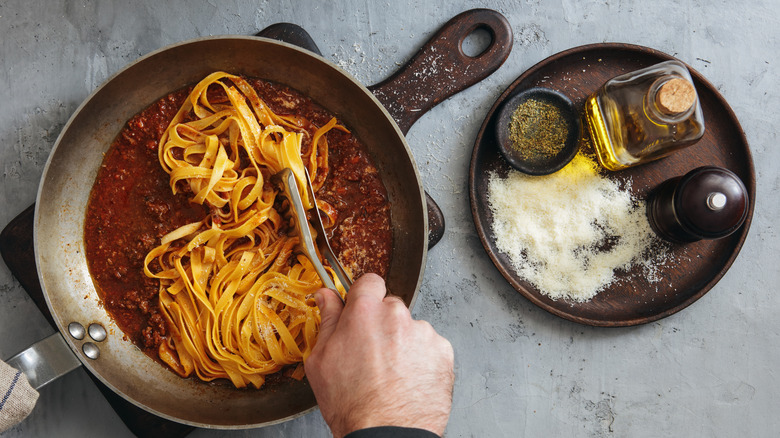Soak Dried Pasta Before Adding To Boiling Water To Reduce Cooking Time
A hearty bowl of pasta is one of the fastest hot meals you can prepare from scratch. Make a simple sauce in one pan while your penne boils in another, toss everything together, and voila! Dinner is ready in under 15 minutes. However, if you're looking to shave your cooking times down even further, and save a little money in the process, you might want to consider soaking your dried pasta before adding it to your boiling water.
Much like pre-soaking lentils and beans, allowing your dried pasta to rehydrate in a little H₂O is a small but significant baller move that makes meal planning in a busy home easier. This simple trick slashes pasta cooking times by more than half, saving energy costs, without affecting the texture of your noodles too much. The appetizing consistency of your pasta is maintained with this effortless technique because the shapes don't actually cook as they sit in the water, but simply swell as they absorb the surrounding liquid. Because no heat has been applied, the starch isn't activated, so the pieces won't stick together. All you need to do is plan ahead and toss your noodles in a bowl of room-temperature water, soaking them for up to two hours (timing will depend on the variety and thickness of the pasta you're using). Your pasta should be pliable and soft at this point but it won't have that slightly translucent look that appears on the edges of pasta that's been fully boiled.
Tips on cooking pre-soaked pasta
When you're ready to get cooking, place the drained, soaked pasta in some salted, boiling water just as you would if you were cooking it straight from the packet. However, you'll only need to boil it for a minute or so to heat it through and finish off the cooking process. Of course, you could even add your soaked pasta directly into a pan of simmering sauce, instead of boiling water, so it soaks up heaps of flavor while it heats through. This method works particularly well with soupier sauces that have a high proportion of liquid and means you can prepare everything in one pan to make clean-up easier.
The beauty of this time-saving and energy-curbing hack is that all varieties of pasta work. You can pre-soak thin strands of spaghettini for Bolognese, twirly cavatappi for a fancy mac and cheese, or large conchiglioni to make jumbo stuffed shells. The only thing to be mindful of is varying the length of time you soak your pasta, which will depend on the overall thickness of the shapes. For example, delicate orzo or pastina will likely need less time to soak than a denser radiatori or corkscrew rotini, simply because of their size. However, once you start to experiment with different types of noodles you'll soon become an expert on the perfect way to prepare pasta pronto.

